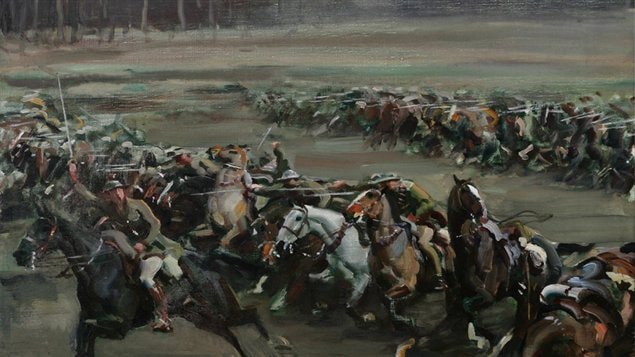Alfred, Lord Tennyson glorified the cavalry charge with his poem about the battle of Balaclava in 1854, “the Charge of the Light Brigade, in which Canadian Alexander Dunn was awarded one of the first Victoria Cross medals, the highest award for valour in the Commonwealth.
However, with the advent of mechanized warfare, and most certainly the machine gun, the cavalry had become redundant by the First World War.
There are certainly challenges as to what constitutes the actual last great cavalry charge in history, but the Canadian charge of March 30 1918, if not “the” last one, was certainly one of the last.
In the First World War, cavalry had been mostly held in reserve, occasionally serving as dismounted units to fill gaps in the line But, a massive German offensive, Operation Michael, was sent against the crucial centre of Amiens to split the French and British armies. A Large German force moved in to occupy the strategic Moreuil Wood, and Rifle Wood about 20 kilometers from Amiens.
To halt the advance, and in a desperate and bold move, A, B,and C Squadrons of the Royal Canadian Dragoons with additional squadrons of the Lord Strathcona’s Horse (Royal Canadians) and Fort Garry Horse, rode into the hail of rifle and machine guns from the woods.
The Germans were caught off guard at first by the sight of mounted troops charging at them, and the Canadians rode right into the infantry where close quarters combat took place with pistols, and sabres.
Although they suffered severe losses in men and horses, the Canadian cavalry had cleared the woods by mid day.
The battle was not over however with German counter-attacks the next day and fighting for the woods which went back and forth for two more days. However, the Canadian charge had stymied the massive German offensive, saved Amiens, and by April 5, that offensive, Operation Micheal, was called off.
For his bravery and distinguished conduct in leading the charge of “C” Squadron Strathconas, Lieutenant Flowerdew was awarded a posthumous Victoria Cross on 24 April 1918.
The RCD, LdSH, and FGH all carry Amiens as battle honours.
Victoria Cross Citation
For most conspicuous bravery and dash when in command of a squadron detailed for special service of a very important nature. On reaching the first objective, Lt. Flowerdew saw two lines of the enemy, each about sixty strong, with machine guns in the centre and flanks, one line being about two hundred yards behind the other. Realising the critical nature of the operation and how much depended upon it, Lt. Flowerdew ordered a troop under Lt. Harvey, V.C. to dismount and carry out a special movement while he led the remaining three troops to the charge. The squadron (less one troop) passed over both lines, killing many of the enemy with the sword; and wheeling about galloped at them again. Although the squadron had then lost about 70 per cent of its numbers, killed and wounded, from rifle and machine gun fire directed on it from the front and both flanks, the enemy broke and retired. The survivors of the squadron then established themselves in a position where they were joined, after much hand-to-hand fighting, by Lt. Harvey’s party. Lt. Flowerdew was dangerously wounded through both thighs during the operation, but continued to cheer on his men. There can be no doubt that this officer’s great valour was the prime factor in the capture of the position..







For reasons beyond our control, and for an undetermined period of time, our comment section is now closed. However, our social networks remain open to your contributions.